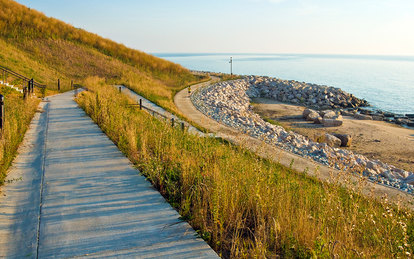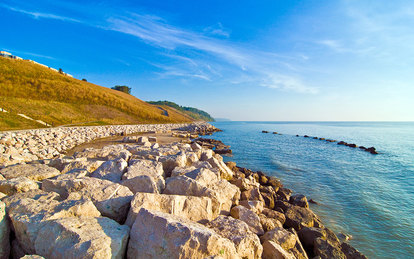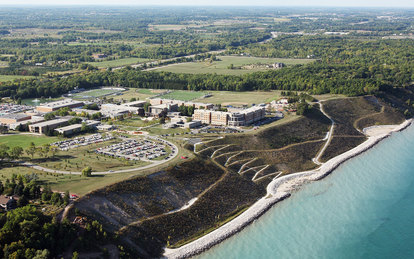Concordia University Wisconsin Lakeshore
Set on a 130-foot bluff above Lake Michigan, Concordia University Wisconsin faced a daunting problem: over 20,000 tons of campus land was eroding annually into the lake. By the time SmithGroup was engaged to address the issue, the university had already lost over five acres of its campus. The resulting design work not only stopped the erosion, but dramatically transformed the University's relationship with the lake and surrounding community.
Client
Concordia University Wisconsin
Location
Mequon, Wisconsin
Markets/Services
Campus Planning, Civil Engineering, Coastal Engineering, Higher Education, Landscape Architecture, Shoreline Protection & Restoration, Waterfront
Size
2,700 feet of shoreline
Featured Awards
ASCE National Award of Merit - Outstanding Civil Engineering Achievement
ASCE WI Section Outstanding Civil Engineering Achievement Award
ASLA WI Award of Excellence - General Design
Waterfront Center Excellence on the Waterfront Honor Award - Environmental Protection/Enhancement
Concordia University Wisconsin’s (CUW’s) Lakeshore Environmental Enhancement and Education Project exemplifies the invaluable role that a multi-disciplinary team of professionals can play in ecological restoration and public placemaking. CUW initiated the project to stabilize their crumbling, 130-foot high bluff along Lake Michigan, provide public recreational access to its lakeshore, and extend the institution’s commitment to environmental education and stewardship. The completed project features a 2,700-foot long stabilized bluff and restored shoreline with accessible trails, an amphitheater, a beach, and bioengineered habitat areas for environmental education and research.
Building on CUW’s mission of community outreach and stewardship, their bluff now serves as one of the only public access points to Lake Michigan for area residents and is heavily used and appreciated. The project’s amphitheater, switchback path and beach design have expanded the campus grounds to the lake, supporting formal and informal campus gatherings and events as well as quiet study and contemplation. The stabilization has increased the campus’ usable land, allowing a new residence hall to be built in a location that would have been untenable before.
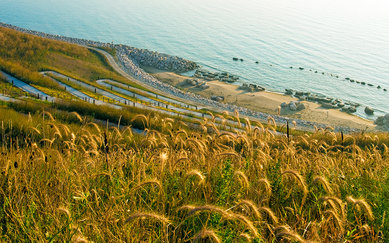
The perched wetland and reef habitat areas represent a unique fusion of environmental/coastal engineering and stormwater design. All the subsurface and surface drainage from the southern half of the project flows to the perched wetland; a control structure maintains the desirable level of water for the wetland plants and excess water is discharged to Lake Michigan following detention and treatment.
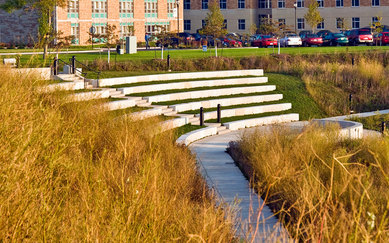
The bluff has been successfully stabilized and beautifully restored, while the lakeshore has been reconnected to the campus and community in a highly beneficial manner. Once an extreme example of shoreline degradation, CUW’s lakeshore is now an environmental jewel and is helping to advance the study of Great Lakes ecology and science. Undergraduate enrollment has increased four-fold since completion, and the university has been able to build a residence hall near the top of the bluff, along with a LEED-Platinum Center for Environmental Stewardship. Students, faculty and area residents now use the restored setting for recreation, reflection, worship, and study.
